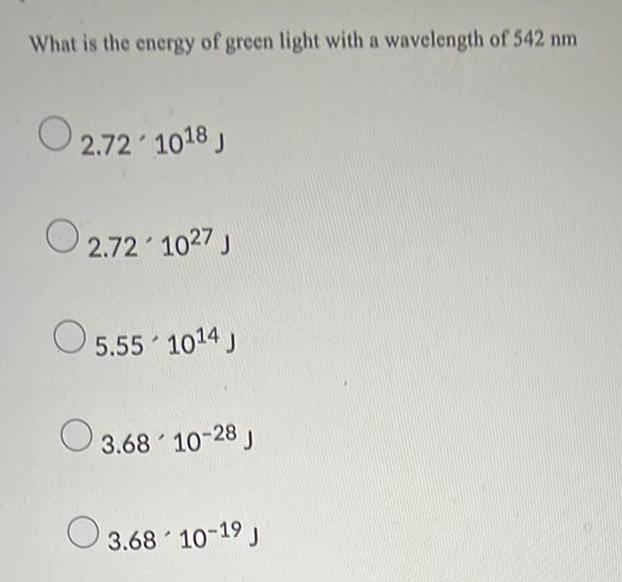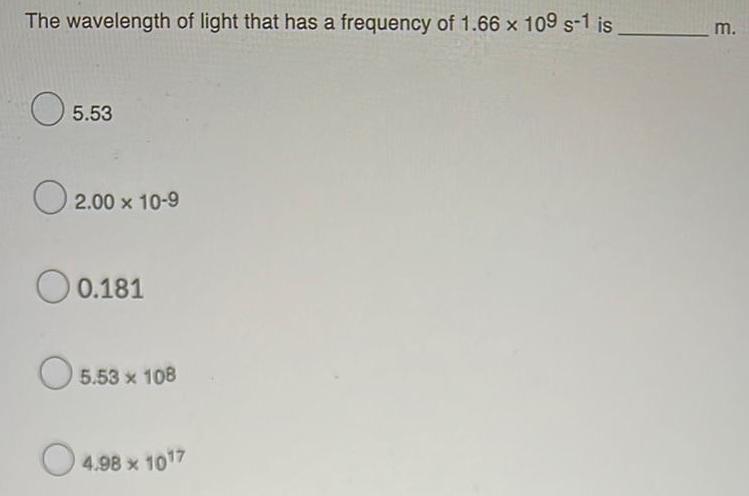General organic chemistry Questions and Answers

Organic Chemistry
General organic chemistryRound answer to proper significant figures and label with proper units.
2Al(s) + 6HCI (aq) → 2AICI3(aq) + 3H₂(g)
If 17.4 grams of hydrochloric acid (HCI) reacted, how many grams of hydrogen (H₂) were produced? NOTE: HCI has a molar mass of 36.46g and H₂ has a molar mass of 2.02g.
a. 0.482 g H₂
b.0.96 g H₂
c. 8.6 g H₂
d.314 g H₂
e.628 g H₂

Organic Chemistry
General organic chemistryDraw the ketone(s) you would expect to form by reacting the following alkynes under the conditions of oxymercuration: (a) 6-methyloct-1-yne, (b) 1,10-dicyclohexyldec-5-yne, and
(c) 5-phenylhex-2-yne.
alkyneHgSO4, H₂SO4 ---> H₂O ketone

Organic Chemistry
General organic chemistryThe following diagram represents the collection of
CO₂ and H₂O molecules formed by complete combustion of a hydrocarbon.
Part A
What is the empirical formula of the hydrocarbon?
Express your answer as a chemical formula.
A chemical reaction does not occur for this question.

Organic Chemistry
General organic chemistryIf aqueous solutions of potassium chromate and barium chloride are mixed, a bright yellow solid (barium chromate) forms and settles out of the mixture, leaving potassium chloride in the solution. Choose a balanced
chemical equation for this process.
K₂ CrO4 (aq) + 3BaCl₂ (aq) → BaCrO4(s) + KCl(aq)
K₂ CrO4 (aq) + BaCl₂ (aq) → BaCrO4(s) + 2KCl(aq)
K₂ CrO4 (aq) + 2BaCl₂ (aq) → 5BaCrO4(s) + 3KCl(aq)
K₂ CrO4 (aq) + 3BaCl₂ (aq) → 4BaCrO4(s) + 2KCl(aq)

Organic Chemistry
General organic chemistryWhich set of hybridization states of C1, C2, and C3 of the following molecule is correct?
a) sp², sp², sp²
b) sp², sp², sp
c) sp³, sp2, sp
d) sp³, sp², sp²

Organic Chemistry
General organic chemistryProvide the correct IUPAC name for the skeletal (line-bond) structure
shown here. Stereochemistry is ignored.

Organic Chemistry
General organic chemistryHow is an ideal gas more "ideal" than a real gas?An ideal gas cannot be heated or cooled.
Ideal gases have forces of attraction between particles.
Ideal gases cannot be compressed.
An ideal gas cannot be condensed into a liquid.

Organic Chemistry
General organic chemistrySelect the proper reaction sequence to convert benzene to 3-butyl-1-bromobenzene in a reasonable yield.
a. 1. Br./FeBr; 2. butanoyl chloride/AICI,; 3. Hg(Zn), HCl(aq)
b. 1. Butanoyl chloride/AICI; 2. Br./FeBr; Hg(Zn), HCl(aq)
c. 1. HNO/H₂SO. (aq); 2. butanoyl chloride/AICI; 3. HBr(aq)/heat
d. 1. Butanoyl chloride/AICI,; 2. HNO./H.SO.(aq); 3. HBr(aq)/heat

Organic Chemistry
General organic chemistryA mixture of He, Ne, and Ar has a pressure of 28.4 bar at 28.0 °C. The partial pressure of He is 2.46 bar and the partial pressure of Ar is 4.78 bar. Calculate the partial pressure of Ne.

Organic Chemistry
General organic chemistryWhich of the following is an example of the Truman Doctrine in action?
a Sharing atomic secrets with our allies.
b Putting Nazi war criminals on trial.
c Beginning the space race after Sputnik's launch.
d Defending South Korea during the Korean War.

Organic Chemistry
General organic chemistrySelect the hybridization of the sulfur atom in CS₂
sp²
sp
sp³
sp³d2
sp³ d

Organic Chemistry
General organic chemistryGive one example for each for of these
reactions (reactant----reagent---
product,
mechanism not needed)
Wittig
Fisher esterification
Tollens

Organic Chemistry
General organic chemistrySelect the mass of 3.57 mol of CO2.
201 g
4.89 x 1022 g
2.15 x 1024 g
0.0811 g
157 g

Organic Chemistry
General organic chemistryWhich of these molecules will only have single bonds?
Draw Lewis structures of these molecules and select the one that has only single bonds
N₂H₂
All options
C₂Cl4
CH3SH
C₂H4
![Determine
the pH for the following solutions:
a. [OH-] = 1.0 × 10-7 M
b. [H3O+] = 4.2 × 10-³ M
c. [H3O+] = 0.0001 M
d. [OH-] = 8.5 x 10-⁹ M](https://media.kunduz.com/media/sug-question/raw/82657460-1659978815.7231355.jpeg?w=256)
Organic Chemistry
General organic chemistryDetermine
the pH for the following solutions:
a. [OH-] = 1.0 × 10-7 M
b. [H3O+] = 4.2 × 10-³ M
c. [H3O+] = 0.0001 M
d. [OH-] = 8.5 x 10-⁹ M

Organic Chemistry
General organic chemistryWhich bond is the most polar?
Select the most polar bond.
Se-Cl
Se-Br
Se-F
Se-S
Se-O

Organic Chemistry
General organic chemistryWhich of the following features of Postmodernism is most predominant in Vonnegut's story, "Harrison Bergeron"?
The presentation of truth as absolute and universal
Use of dystopian settings to comment on contemporary life
Decreasing contact with the actual, physical world
Use of multiple points of view and perspectives

Organic Chemistry
General organic chemistryFor each compound name, provide the following:
a) correct stereochemical representation (i.e. wedge/dash)
d) draw a plane of symmetry where appropriate
e) draw any enantiomer
f) draw any diastereomers
g) label the structure as chiral or achiral
a) (3S, 6S)-3-tert-butyl-6-methyl-1-octyne

Organic Chemistry
General organic chemistryLook at the following chemical equation.
4 Al +3O₂ --> 2 Al₂O3
What is true about this chemical equation?
A. It is balanced because the number of reactants is equal to the number of
products.
B. It is unbalanced because the number of reactants is greater than the number
of products.
C. It is unbalanced because the mass of the reactants is greater than the mass
of the products.
D. It is balanced because the mass of the reactants is equal to the mass of the
products.

Organic Chemistry
General organic chemistryAn ionic bond forms between two atoms through _.
sharing of electron pairs
transferring of electrons from metallic atoms to nonmetallic atoms
transferring of protons from the nucleus of the nonmetal to the nucleus of the metal
each atom acquiring a negative charge

Organic Chemistry
General organic chemistryThe chloride ion has the same electron configuration as
an Ar atom
a Ne atom
a Kratom
a bromide ion

Organic Chemistry
General organic chemistryAluminum has a density of 2.70 g/cm³. What is the volume of 420.5 g of aluminum?
6.42 x 10-3 cm³
1.14 x 10³ cm³
13.0 cm³
156 cm³

Organic Chemistry
General organic chemistry_ and its laws are obeyed by
living cells.
Cryogenics
Bioinformatics
Thermodynamics
Metal catalysis

Organic Chemistry
General organic chemistryNatural gas is
mostly formed
from
A. water
B. marine mud
C. sand
D. old trees

Organic Chemistry
General organic chemistryA reaction between lead (II) nitrate and potassium iodide is a
synthesis reaction
single displacement reaction
combustion reaction
double displacement reaction


Organic Chemistry
General organic chemistryWhich set of numbers will correctly balance the given equation?
Mg(NO3)₂(aq) + Na₂Cr₂O7(aq) → MgCr₂O7(s) +_ NaNO3(aq)
-1, 1, 1, 2
1, 2, 2, 2
1,4, 1, 2
2, 1, 1, 4

Organic Chemistry
General organic chemistryAtom X has 27 protons, 29 neutrons, and 27 electrons. Atom Y has 27 protons, 30 neutrons, and 27
electrons. Atoms X and Y are _.
isomers
isobars
isotopes
isoelectronic

Organic Chemistry
General organic chemistryDetermine the type of reaction shown and balance the equation. In addition, explain the process you used to balance the equation.
Na + O₂ → Na₂O

Organic Chemistry
General organic chemistryHund's Rule is being broken in which of the following orbital diagrams?

Organic Chemistry
General organic chemistryWhich of the following statements is NOT part of Dalton's atomic theory?
All matter is made up of atoms
Atoms of two or more different elements combine to form compounds
The nucleus of an atom is dense and positively charged
Atoms are never created or destroyed during a chemical reaction

Organic Chemistry
General organic chemistryCarry out the following calculations with the correct number of significant figures: 22.41 +0.523 + 26.4012
49.3342
49.334
49.33
49.3

Organic Chemistry
General organic chemistryWhich of these is not suitable for the synthesis of 3-methyl butanoic acid?
treat 1-bromo-2-methyl-propane with Mg, ether, than treat with CO2, then aqueous acid workup
3-methyl but-1-ene treated with B₂H6-THF, followed by H₂O₂ in NaOH; then treat with Na₂Cr₂O7 in aq. H₂SO4
4-methyl pent-1-ene treated with hot acidic KMnO4
2-bromo-3-methyl butane treated with NaCN followed by hydrolysis (H3O+, heat)

Organic Chemistry
General organic chemistryWhen multiplying or dividing measured numbers, we use the measurement with the least number of
significant figures to determine the number of significant figures (sf) in our answer. For example:
3.5 cm x 4.75 cm = 17 cm² (even though the calculator gives 16.675) Solve the following problems
assuming all are measured numbers. Report the correct number of significant figures.
a. 7.00 x 15.00 =
b. 40.21.901 =
c. (0.003) (13.2) =
d. 1.590 0.3975 =

Organic Chemistry
General organic chemistryArrange in the increasing order of pka.
2-bromo-3-methyl-butanoic acid (A)
3-bromo-2-methyl butanoic acid (B)
2-ethyl-3-methyl butanoic acid (C)
2-chloro-3-methyl butanoic acid (D)
A<B<D<C
D<B<A<C
D<A<B<C
C<B<A<D

Organic Chemistry
General organic chemistryA 1.9-mol sample of KCIO3 was decomposed according to the equation
2KCIO,(s)→2KC(s) + 30₂ (g)
How many moles of O₂ are formed assuming 100% yield?
1.3 mol
1.6 mol
1.9 mol
1.0 mol
2.8 mol

Organic Chemistry
General organic chemistryWhich set of quantum numbers below describe the electron that is highest in energy.
n=4, 1=2, m₁ = 2₁ mg = + ½
n= 1, 1 = 0, m₁ = 0, ms = + ½
n= 1, 1 = 0, m₁ = 0, ms = -1/2
n = 4,1 = 2, m₁= 3, mç = -1/2
n=3, 1=2, m₁ = 1, ms = +½

Organic Chemistry
General organic chemistryWhat is the valence electron configuration of a group 2 element.
ns²np7
ns²
ns¹
ns² np5
ns²np6

Organic Chemistry
General organic chemistryHow many valence electrons are in an atom of gallium?
three
five
one
four
two

Organic Chemistry
General organic chemistryWhat is the energy of green light with a wavelength of 542 nm
2.72 1018 J
2.72 1027 J
5.55 1014 J
3.68 10-28 J
3.68 10-19 J

Organic Chemistry
General organic chemistryThe wavelength of light that has a frequency of 1.66 x 109 s-1 is
5.53
2.00 × 10-9
0.181
5.53 x 108
4.98 × 1017

Organic Chemistry
General organic chemistrySelect the most metallic element from the group below.
sodium
calcium
barium
cesium
magnesium

Organic Chemistry
General organic chemistryHow many orbitals are present in the n = 4 shell of an atom?
32
4
10
16
5
![The ground-state electron configuration of the element is [kr]5s14d5.
OTC
OMn
Mo
cr
Nb](https://media.kunduz.com/media/sug-question/raw/81324244-1659897905.684953.jpeg?w=256)
Organic Chemistry
General organic chemistryThe ground-state electron configuration of the element is [kr]5s14d5.
OTC
OMn
Mo
cr
Nb

Organic Chemistry
General organic chemistryWhich of these elements has the highest first ionization energy?
Rb
Li
Ne
O
F

Organic Chemistry
General organic chemistryIndicate the ground state electron configuration for aluminum.
15²2s²2p¹
15²25²2p635¹3p²
15²25²20635²
15²25²2p63s²3pº
15²25²2635²3p¹

Organic Chemistry
General organic chemistryIn which set of elements would all members be expected to have very similar chemical properties?
Br, I, At
Ne, Na, Mg
P, Se, I
Si, As, Te
Cl, Br, Na

Organic Chemistry
General organic chemistryWhat is true below for an atom that is in its ground state electron configuration.
Unpaired electrons in the same orbitals have opposite spins.
Orbitals within a subshell are filled to maximize the pairing of electrons.
Electrons are promoted to a higher-energy orbital before they are paired in the
same orbital.
Electrons fill higher-energy shells before filling lower-energy shells.
Unpaired electrons in different orbitals have opposite spins.

Organic Chemistry
General organic chemistryWhich of the following is NOT a structural isomer of 2-methylpentane?
1. 1,2 dimethylbutane
2. hexane
3. 2,2-dimethylbutane
4. 2,2-dimethylpropane
5. 2 ethyl butane

Organic Chemistry
General organic chemistryIdentify the atom with the ground-state electron configuration shown for its valence shell.
4s²3d¹04p6